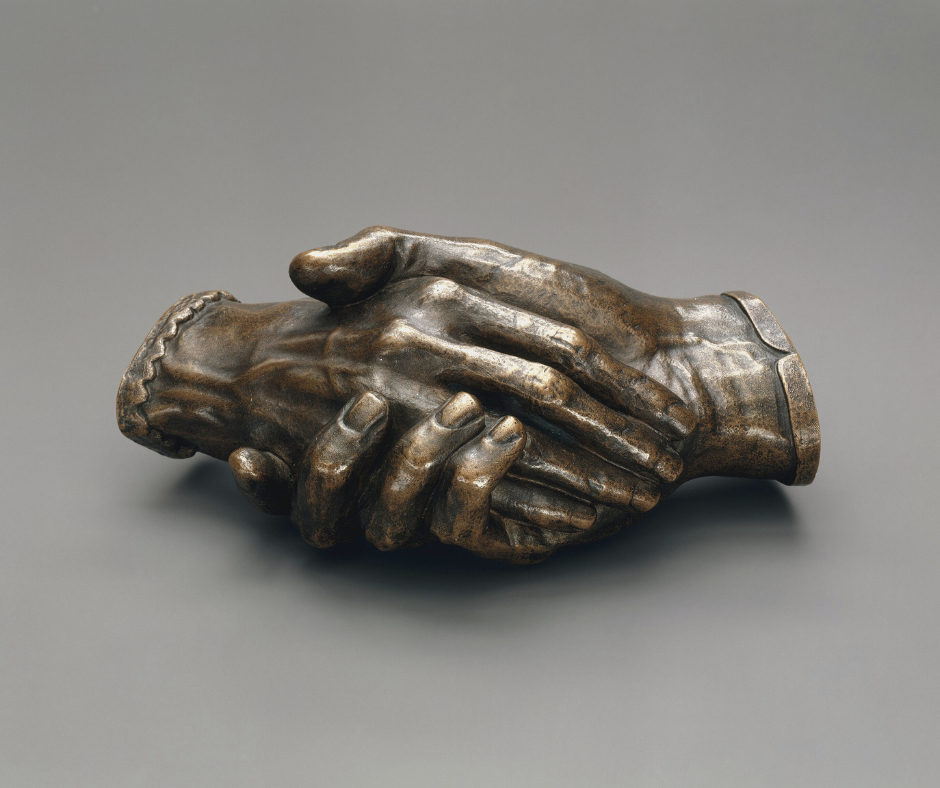

Behind (Some) Great Women: The Supportive Partners of History’s Leading Ladies
Summary
Reflection Questions
Journal Prompt
The accomplishments of women have often been overshadowed by societal norms and expectations. While many women succeeded on their own and in spite of the views held by their contemporaries, some received support from loving spouses. In this article, we reflect on the supportive role that certain men who stood by their wives took, championing their careers and talents in times when society offered little to no encouragement for women to step outside traditional roles. From the intimate collaborations between artists and intellectuals to the supportive partnerships within science and activism, these stories reveal a shared commitment to equality, respect, and mutual success. In honor of Valentine’s Day, let’s celebrate the profound impact that supportive partnerships can have on individual achievement and the broader fight for women’s rights and recognition. From Marie and Pierre Curie to Dolly Parton and Carl Dean, read on to learn about the supportive partners of history’s leading ladies.
A Supporting Role: How Some Men Have Helped Women Inch Toward Equality
Men have played various roles in supporting feminist movements and advocating for women’s rights to be intellectual leaders, artists, and more. Their involvement has been crucial in many instances, contributing to the advancement of gender equality and the recognition of women’s contributions across diverse fields. Let’s take a closer look at how certain men have supported the rights of women throughout history.
Advocacy and Legal Support
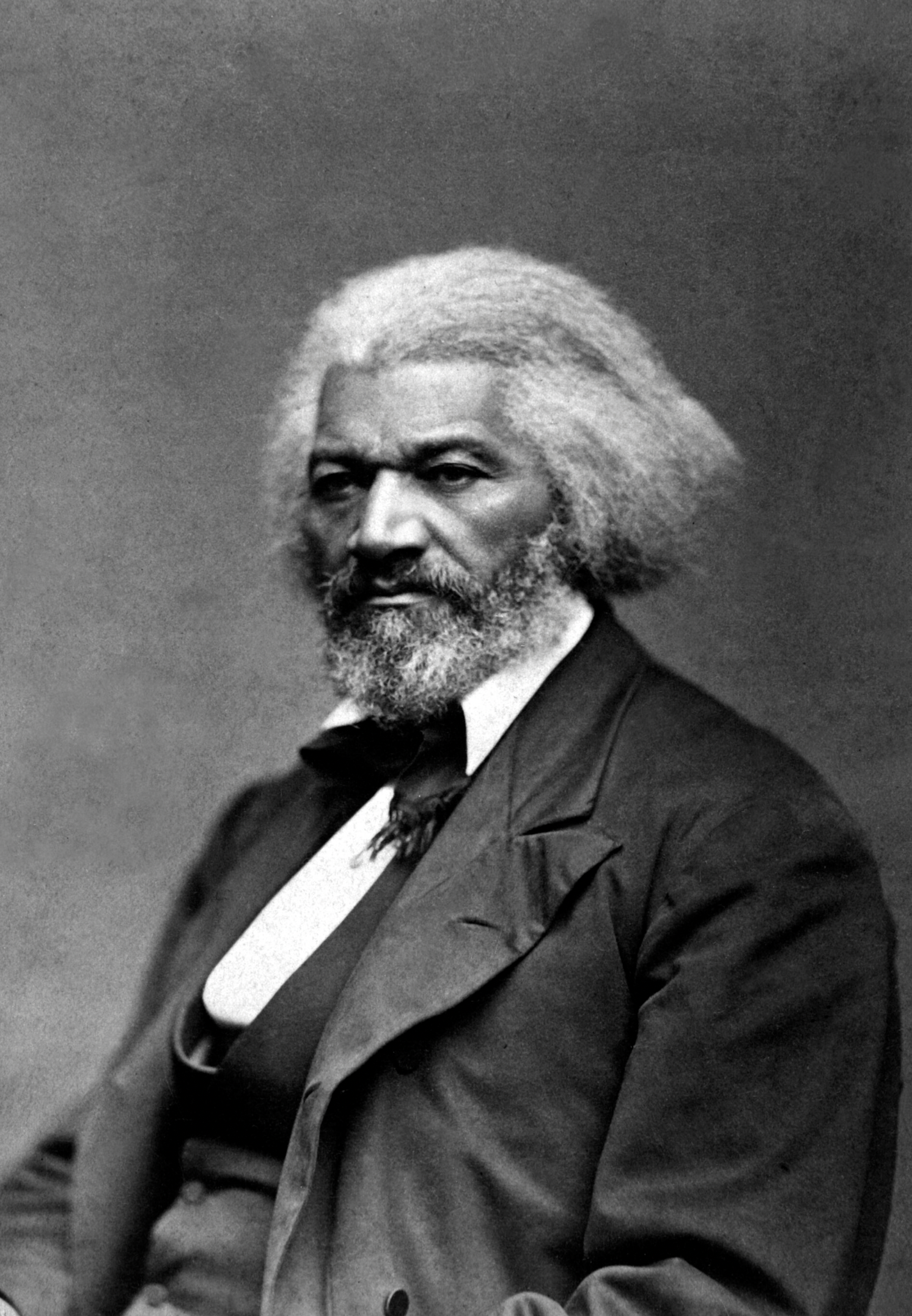

Men have been instrumental in advocating for legal reforms that support women’s rights. This includes voting for, drafting, and enacting legislation that promotes gender equality, such as laws pertaining to voting rights, reproductive rights, and workplace equality. For example, male allies played significant roles in the suffrage movements by supporting women’s right to vote, both through advocacy and by leveraging their positions in legislative bodies.
For example, the famed abolitionist Frederick Douglass was also a proponent of women’s suffrage. Douglass participated in the Seneca Falls Convention in 1848, a seminal event in the American women’s rights movement. His advocacy for women’s rights, however, was part of a broader struggle for equality that sometimes saw tensions between different rights movements.
Educational Reform
Men have contributed to educational reforms that have made education more accessible to women, recognizing the importance of education in empowering women and enabling them to take on leadership roles. By advocating for coeducation and women’s colleges, as well as for curricula that include women’s studies and feminist theory, male allies have helped ensure that women can pursue intellectual development and leadership training. For example, Matthew Vassar, the founder of Vassar College, played a significant role in advancing women’s rights to education and intellectual leadership.
Public Advocacy and Allyship
Men have used their platforms to speak out against gender-based discrimination and violence, and to advocate for equality. This includes participating in feminist movements, engaging in public discourse about gender equality, and challenging sexist behaviors and attitudes in their personal and professional lives. Male allies have also played key roles in initiatives aimed at educating men and boys about feminism and the importance of respecting women’s rights.
Intellectual and Artistic Recognition
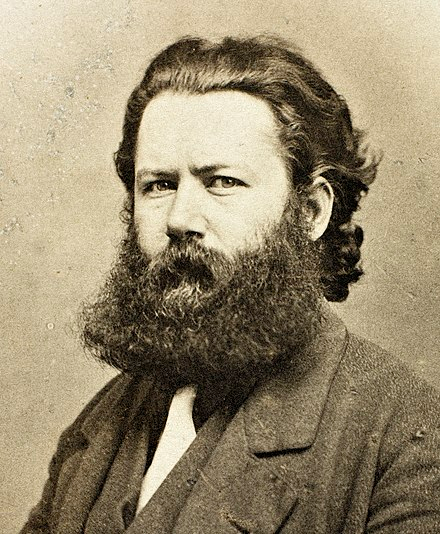

Throughout history, some men have recognized and celebrated the intellectual and artistic contributions of women, often against the prevailing norms of their times. By acknowledging and promoting the work of female intellectuals, artists, and scientists, these men helped challenge stereotypes and opened up spaces for women in fields from which they were traditionally excluded.
For example, men like John Stuart Mill, a philosopher and economist, advocated for women’s rights and equality in the 19th century, emphasizing the importance of their contributions to society and the injustice of denying their rights. Similarly, Norwegian playwright Henrik Ibsen, whose works include “A Doll’s House,” sparked debates about women’s independence and criticized the societal norms that limited women’s rights in the late 19th century. While his plays advocated for women’s rights to self-expression and independence, the broader societal support for these ideals was still emerging.
Financial and Institutional Support
Men in positions of power and influence have provided financial backing and institutional support for women’s projects and careers. This includes funding women-led ventures, supporting scholarships for female students, and advocating for the appointment of women to leadership positions within organizations. Such support has been crucial in enabling women to pursue their ambitions in academia, the arts, and business.
Mentorship and Sponsorship
Men in leadership positions have sometimes acted as mentors and sponsors for women, helping them navigate careers in academia, the arts, sciences, and business. By sharing their knowledge, opening doors to opportunities, and advocating for women’s advancement, these men have played a vital role in supporting the next generation of female leaders.
Historical Limitations in Men’s Support for Women
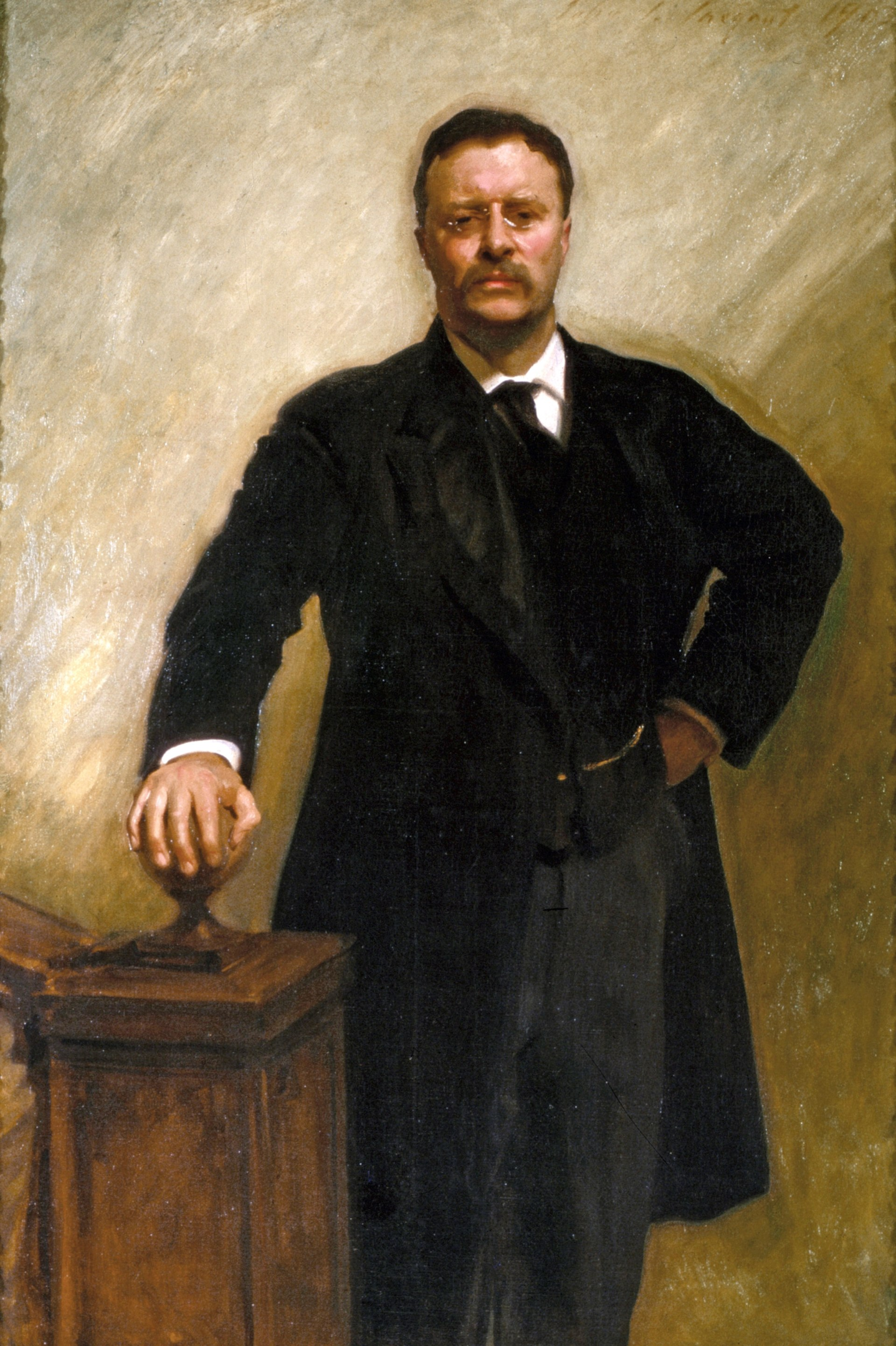

Throughout history, the support of men for women’s rights and feminist movements has been complex and varied, often reflecting the broader societal attitudes and norms of their times. While some men have actively supported women’s rights to be intellectual leaders, artists, and more, their support sometimes came with limitations or did not extend to full equality, even within personal relationships.
For example, as the President of the United States, Roosevelt supported progressive labor policies that indirectly benefited women, such as advocating for child labor laws and better working conditions, which were crucial for working women. However, his support for women’s rights was not comprehensive. He was not a vocal advocate for women’s suffrage until later in his career, reflecting the cautious approach many men of his status took towards women’s full equality.
Complexities in Personal Relationships
The relationship between Abigail and John Adams illustrates the complexity of support for women’s rights. Abigail Adams famously wrote to her husband, asking him to “remember the ladies” in the new laws of the United States, advocating for rights that women did not yet possess. John Adams’s response was teasing and noncommittal, reflecting a broader societal attitude that acknowledged women’s contributions but fell short of supporting true equality.
Similarly, Pierre and Marie Curie’s relationship did not far exceed the bounds of their time. While Pierre famously supported his wife Marie Curie’s scientific career, enabling her to achieve unprecedented success for a woman in science, the broader context of their relationship operated within the gender norms of the early 20th century. Pierre’s support was groundbreaking in many ways, yet it took place in a world where women’s intellectual capabilities were routinely underestimated.
Famous Power Couples: Men Who Supported the Careers of Their Female Partners
Having acknowledged the limitations of relationship dynamics during earlier periods of our history, let us now reflect on a few incredible women who achieved success and recognition with support from their male partners. From Marie and Pierre Curie to Elizabeth Barrett and Robert Browning, let’s get into it!
Marie and Pierre Curie
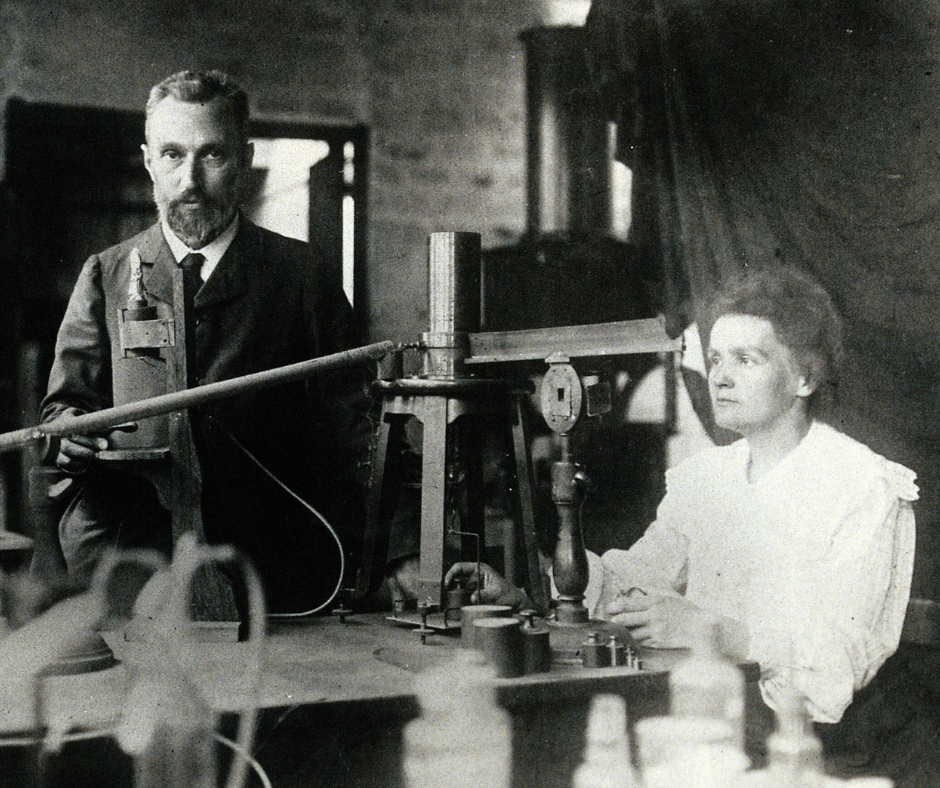

Marie Curie’s achievements are monumental in the history of science, marking her as one of the most distinguished scientists of her time. Her relentless pursuit of knowledge led to the discovery of two new elements, polonium and radium, which revolutionized the understanding of radioactivity—a term she coined. Marie’s work laid the foundational principles for the field of atomic physics and had profound implications for medicine, particularly in the development of cancer treatments through radiation therapy.
She was the first woman to win a Nobel Prize, and uniquely, she won it twice in two different scientific fields: Physics in 1903, which she shared with Pierre Curie and Henri Becquerel for their work on radioactivity, and Chemistry in 1911 for her discovery of radium and polonium. Beyond her scientific achievements, Marie Curie’s legacy includes her role as a trailblazer for women in science.
She broke numerous gender barriers, becoming the first woman to receive a Ph.D. in France, the first female professor at the University of Paris, and an inspirational figure for countless women in STEM fields. Marie’s dedication to science, her resilience in the face of societal and personal challenges, and her unparalleled contributions to the understanding of the natural world continue to inspire admiration and respect to this day.
Her Relationship with Husband Pierre Curie
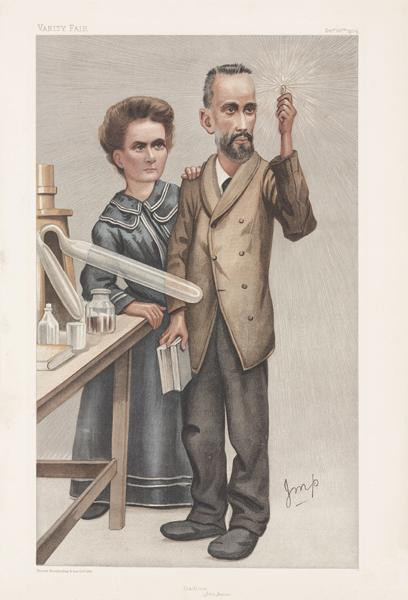

Pierre Curie’s support for his wife, Marie Curie, was both profound and instrumental in her groundbreaking scientific achievements, exemplifying a partnership based on mutual respect and shared passion for research. Pierre, already an established physicist by the time he met Marie, recognized her exceptional intellect and dedication to science, encouraging her to pursue her own research interests.
When Marie chose to investigate the mysterious rays emitted by uranium—a project that would lead to the discovery of radioactivity—Pierre was so intrigued by the potential of her work that he put aside his own research to assist her. This was a remarkable decision at a time when women’s contributions to science were often overlooked or minimized. Pierre’s support was not just emotional or intellectual; he actively collaborated with Marie, ensuring that they shared laboratory space, equipment, and, most importantly, the recognition for their discoveries.
Their partnership was one of equals, working side by side in challenging conditions, often in a makeshift laboratory, to isolate radioactive elements. When Pierre received the Nobel Prize without Marie, he rejected it until her work was recognized. Pierre’s advocacy for Marie’s work extended to the broader scientific community, where he insisted that she receive due credit for their joint research. This support was crucial in overcoming the institutional and societal barriers that Marie faced as a woman in science at the turn of the 20th century.
Elizabeth Barrett and Robert Browning
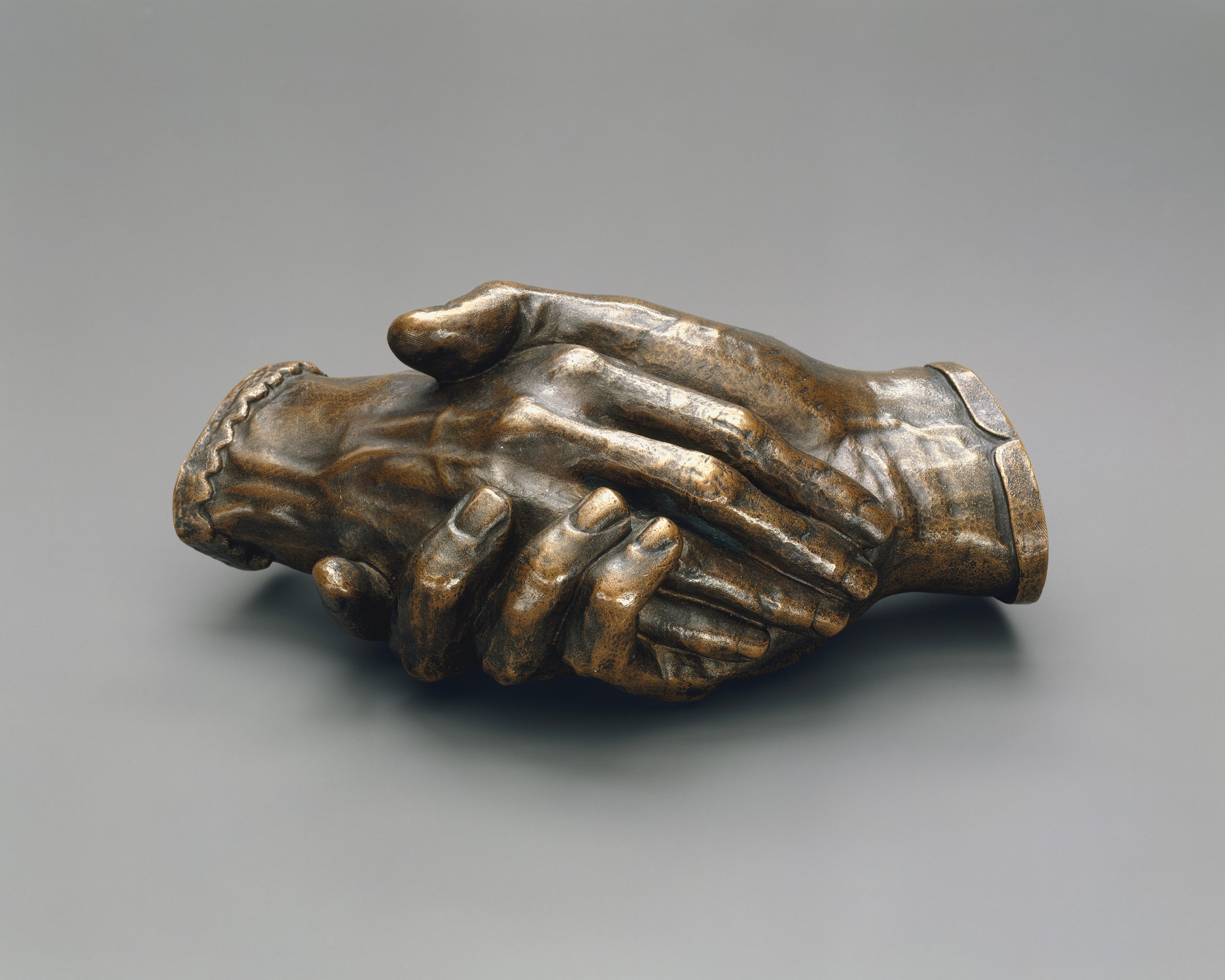

Elizabeth Barrett Browning’s achievements in literature mark her as one of the most important poets of the Victorian era, with a legacy that has endured well beyond her lifetime. Her poetry is celebrated for its emotional depth, technical skill, and engagement with contemporary social issues, including the abolition of slavery, gender equality, and the reform of child labor laws.
Her early collection “Poems” brought her critical acclaim, but it was “Sonnets from the Portuguese,” a deeply personal series of love sonnets to Robert Browning, that cemented her status as a literary giant. These sonnets are among the most beloved and critically acclaimed poems in the English language, celebrated for their passionate intensity and lyrical beauty.
Beyond her poetic achievements, Elizabeth was a pioneering figure in the use of poetry as a means to comment on and advocate for social change. Her long narrative poem “Aurora Leigh,” which tackles issues of gender roles, women’s independence, and the artist’s role in society, was groundbreaking. It challenged conventional narratives and offered a bold, feminist critique of Victorian society’s limitations on women, both personally and professionally. Elizabeth’s work not only contributed significantly to the literary canon but also paved the way for future generations of women writers and activists, illustrating the power of literature as a tool for social critique and change.
Her Relationship with Partner Robert Browning
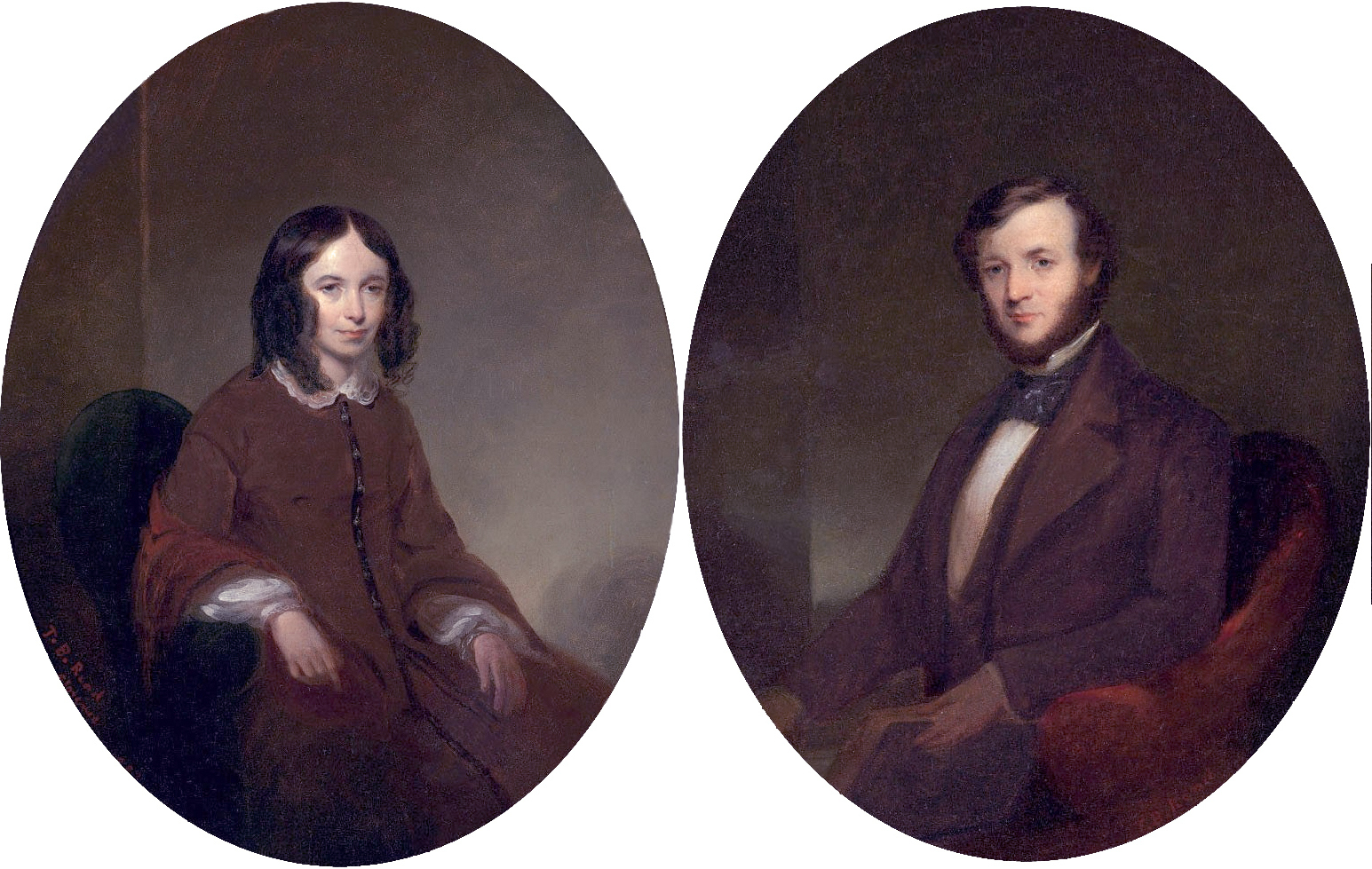

Robert Browning’s support for Elizabeth Barrett Browning was a hallmark of their relationship, showcasing not just a romantic partnership but a profound mutual respect for each other’s literary talents. At a time when female authors often faced societal skepticism and were encouraged to confine themselves to traditional roles, Robert’s admiration and encouragement of Elizabeth’s work were both unusual and invaluable.
Before their marriage, Elizabeth was the more famous poet, known for her collection “Poems” published in 1844, which Robert greatly admired. His initial letter to her in January 1845, expressing his admiration for her work, marked the beginning of their correspondence and eventual partnership. Robert’s belief in Elizabeth’s poetic abilities was unwavering; he encouraged her to publish her work, including her most famous collection, “Sonnets from the Portuguese,” which was initially intended to remain private.
These sonnets, revealing deep personal emotions and showcasing her mastery of the sonnet form, were published largely due to Robert’s encouragement. His support was not just emotional but also practical; understanding the detrimental effects of Elizabeth’s domineering father and poor health on her creativity, Robert encouraged their move to Italy for both her health and creative freedom. This move marked a prolific period in Elizabeth’s career, free from the constraints she had faced in England.
Simone de Beauvoir and Jean-Paul Sartre
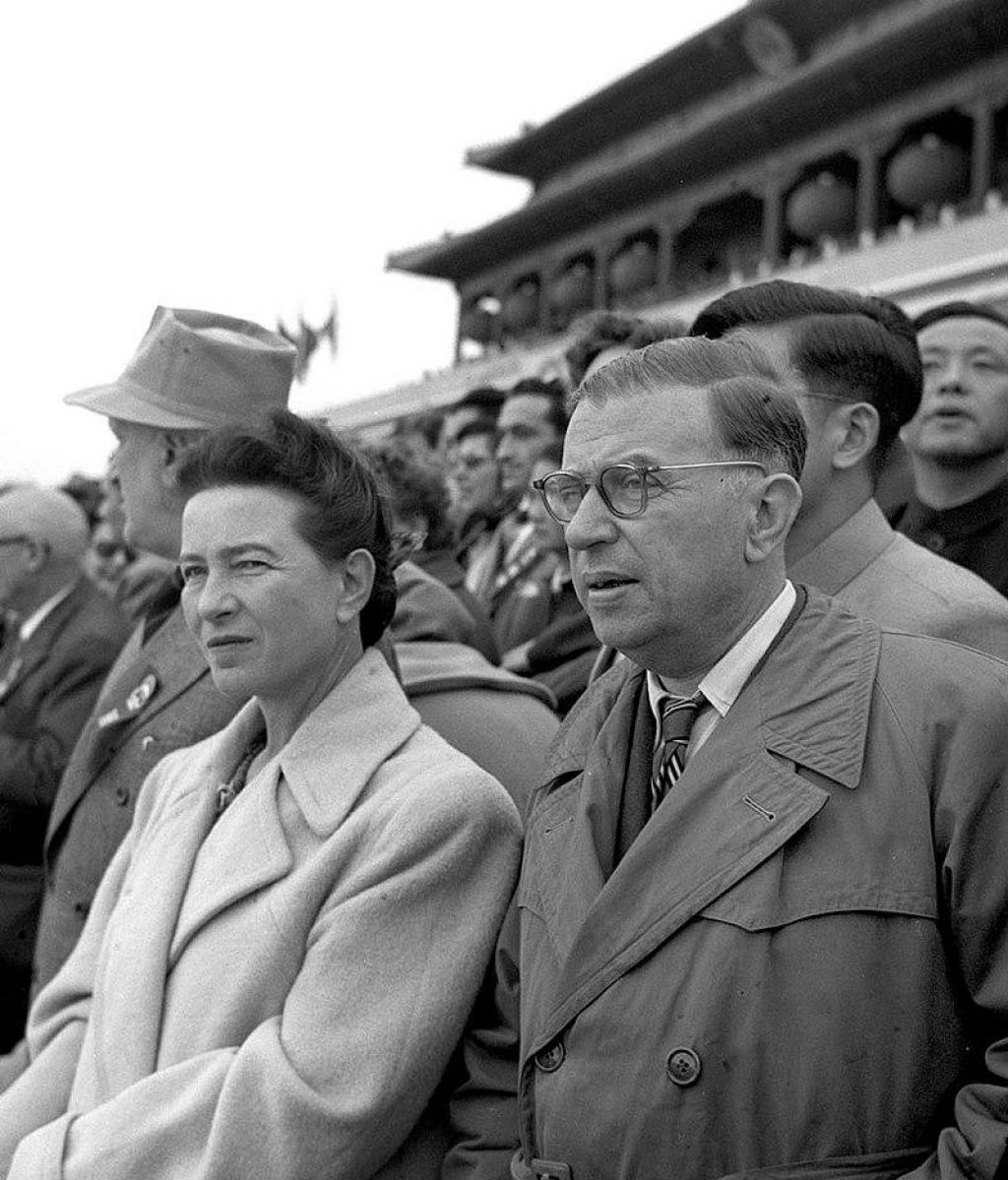

Simone de Beauvoir’s achievements stand as monumental contributions to existentialist philosophy, feminist theory, and literature. Her seminal work, “The Second Sex” (1949), remains a cornerstone of feminist literature, articulating the foundational concept of “the Other” and examining the construction of female identity within a patriarchal society. This work profoundly influenced the development of feminist thought, challenging biological determinism and advocating for the social and historical analysis of women’s oppression.
De Beauvoir’s exploration of women’s alienation and her assertion that “one is not born, but rather becomes, a woman” provided a critical framework for understanding gender as a social construct, laying the groundwork for contemporary feminist theory. Beyond “The Second Sex,” de Beauvoir’s extensive body of work includes novels, essays, biographies, and an autobiography, showcasing her versatility and depth as a writer.
Her intellectual rigor and commitment to exploring the complexities of existence, ethics, and freedom, both in her philosophical and literary works, have made her a pivotal figure in the intellectual history of the 20th century. De Beauvoir’s legacy extends beyond her contributions to philosophy and literature; she embodied the existentialist commitment to living one’s life as a project of freedom, continually questioning and transcending given roles and expectations.
Despite the controversies surrounding her personal life and relationships, de Beauvoir’s work continues to inspire and challenge readers and thinkers across the world, cementing her status as a pioneering intellectual and feminist icon.
Her Relationship with Jean-Paul Sartre
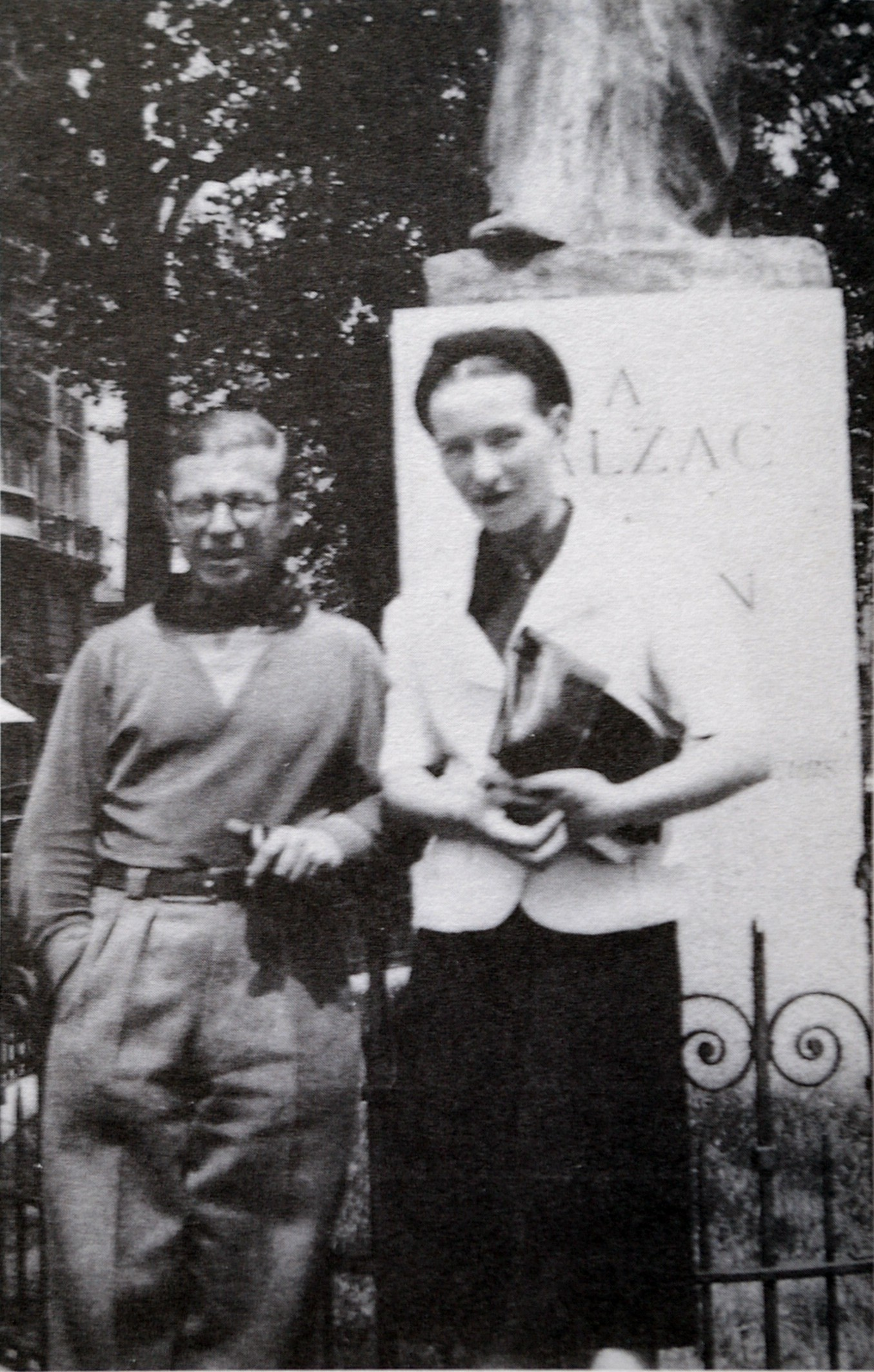

Jean-Paul Sartre and Simone de Beauvoir formed one of the 20th century’s most iconic and intellectually dynamic partnerships, characterized by mutual intellectual respect, freedom, and an unwavering commitment to both personal and philosophical exploration. Sartre’s support for de Beauvoir was evident in their lifelong dialogue, collaboration, and promotion of each other’s work, within a relationship that defied conventional norms. They met as students at the École Normale Supérieure in Paris, quickly becoming intellectual companions and challenging each other’s ideas, which played a crucial role in shaping their respective philosophical works.
Sartre and de Beauvoir maintained a pact of essential freedom — a commitment to transparency and to pursuing their intellectual and romantic lives independently, yet always returning to each other for discussion and critique. This pact allowed de Beauvoir, in particular, to navigate the male-dominated intellectual landscape of the time with Sartre’s unwavering support. He recognized her as an equal, and their relationship was a testament to a shared belief in the importance of freedom, an idea central to existentialist philosophy.
However, it is important to acknowledge that their relationship and the broader circle around them have been subjects of controversy, particularly with claims of sexual assault and the ethical implications of their sexual and romantic engagements with younger women and students. These aspects of their lives have led to significant debate and reevaluation of their legacy in light of modern understandings of power dynamics and consent.
Frida Kahlo and Diego Rivera
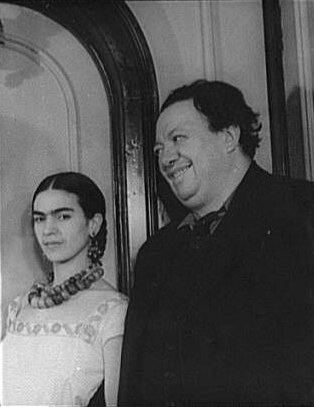

Frida Kahlo’s achievements as an artist are monumental, her work gaining international acclaim for its unique style and profound emotional depth. Kahlo’s art is a vivid exploration of her identity, experiences, and the suffering she endured throughout her life, including her battle with polio as a child and a devastating bus accident at the age of 18, which led to a lifetime of pain and medical issues. Her paintings, often categorized as surrealism, defy simple classification. Kahlo herself rejected the label, insisting that her work reflected more her reality than her dreams.
Kahlo’s ability to convey complex emotions and narratives through her richly symbolic and intensely personal paintings has made her an icon of resilience and creativity. Her most famous works, such as “The Two Fridas” and “Self-Portrait with Thorn Necklace and Hummingbird,” delve into themes of self-reflection, pain, and introspection, showcasing her extraordinary ability to explore and express the human condition.
Beyond her artistic legacy, Kahlo’s life and work have become symbols of feminist and LGBTQ+ empowerment, as well as disability rights advocacy, challenging societal norms and inspiring generations of artists and activists. Despite the challenges she faced, including those posed by her relationship with Rivera, Kahlo’s enduring legacy is a testament to her fierce independence, unique artistic vision, and the universal resonance of her work.
Kahlo’s Relationship with Rivera
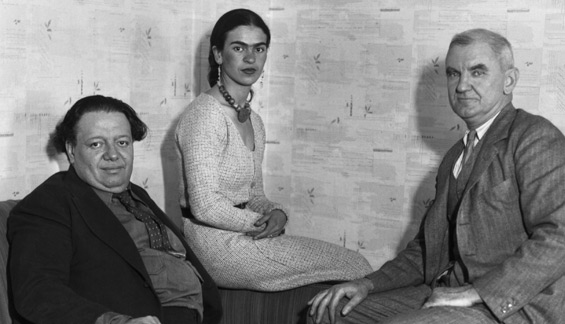

Muralist Diego Rivera played a significant role in both the personal and professional life of Frida Kahlo, one of Mexico’s most celebrated artists. Rivera’s support for Kahlo’s work was evident from the early stages of their relationship, which began when Kahlo sought Rivera’s advice on pursuing an art career.
Despite the vast differences in their artistic styles—Rivera focusing on large, public murals depicting social and political themes, and Kahlo on intimate, personal paintings exploring identity, post-colonialism, gender, class, and race in Mexican society—they found common ground in their commitment to Mexicanidad, a cultural movement that sought to reclaim Mexico’s indigenous culture and history. Rivera’s influence helped to introduce Kahlo’s work to a wider audience, including arranging for her first solo exhibition in the United States. He was vocal in his admiration for her talent, often praising her as a more significant artist than himself.
However, their relationship was tumultuous, marked by mutual infidelities and Rivera’s controversial affair with Kahlo’s younger sister, Cristina. These betrayals deeply hurt Kahlo, yet her paintings reveal a complex interweaving of pain, love, and artistic inspiration drawn from their volatile union.
Abigail and John Adams
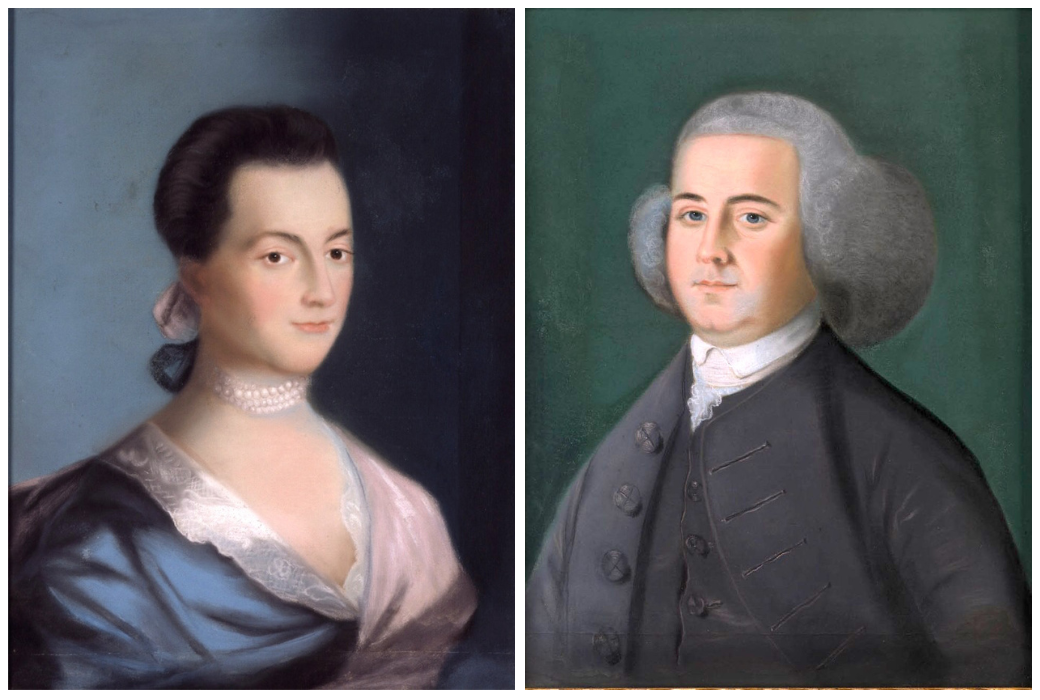

Abigail Adams’ achievements extend beyond her role as a wife and mother to prominent historical figures; she was a formidable intellect in her own right, with a keen understanding of the political and social issues shaping the United States. Her letters are treasured for their insights into American history, offering perspectives on the Revolutionary War, the challenges of the early republic, and the domestic and international politics of the era.
Abigail’s advocacy for women’s rights and education was pioneering. Her letter to John, asking him to “remember the ladies,” is often cited as an early call for gender equality. Though her advice was not heeded in her lifetime, her words resonate as a precursor to the women’s rights movements that would emerge in the centuries following.
Abigail’s contributions to American society were not limited to her influence on her husband. She was a moral and political compass in her own right, advocating for abolition and educating her children, including future president John Quincy Adams, in the principles of liberty and civic responsibility.
Despite the constraints placed upon her by the societal norms of her time, Abigail Adams remains a symbol of the critical role women played in the founding and shaping of the United States, her legacy serving as an enduring testament to her intelligence, political savvy, and unwavering commitment to principles of equality and justice.
Her Relationship with John Adams
John Adams, the second President of the United States, and his wife Abigail Adams shared a partnership that was both deeply personal and intellectually engaging, set against the backdrop of the American Revolution and the early years of the new nation. Their extensive correspondence provides a window into a relationship built on mutual respect, love, and a shared commitment to the country’s founding principles.
John valued Abigail’s opinions on a wide range of subjects, including politics, and she became his most trusted advisor and confidante. In an era when women were largely excluded from the public sphere, John’s reliance on Abigail’s counsel was remarkable. She was not shy about expressing her views on governance and policy, famously urging her husband to “remember the ladies” in the new laws of the fledgling nation, advocating for women’s rights in a time when such ideas were revolutionary.
However, their relationship also reflected the limitations of the period. While John respected Abigail’s intellect and judgment, his responses to her advocacy for women’s rights were often patronizing, reflecting the prevailing attitudes of the time that saw women’s roles as confined to the domestic sphere. Despite this, their partnership demonstrates a significant degree of mutual support and a level of intellectual companionship that was rare for marriages in the 18th century.
George Sand and Frédéric Chopin
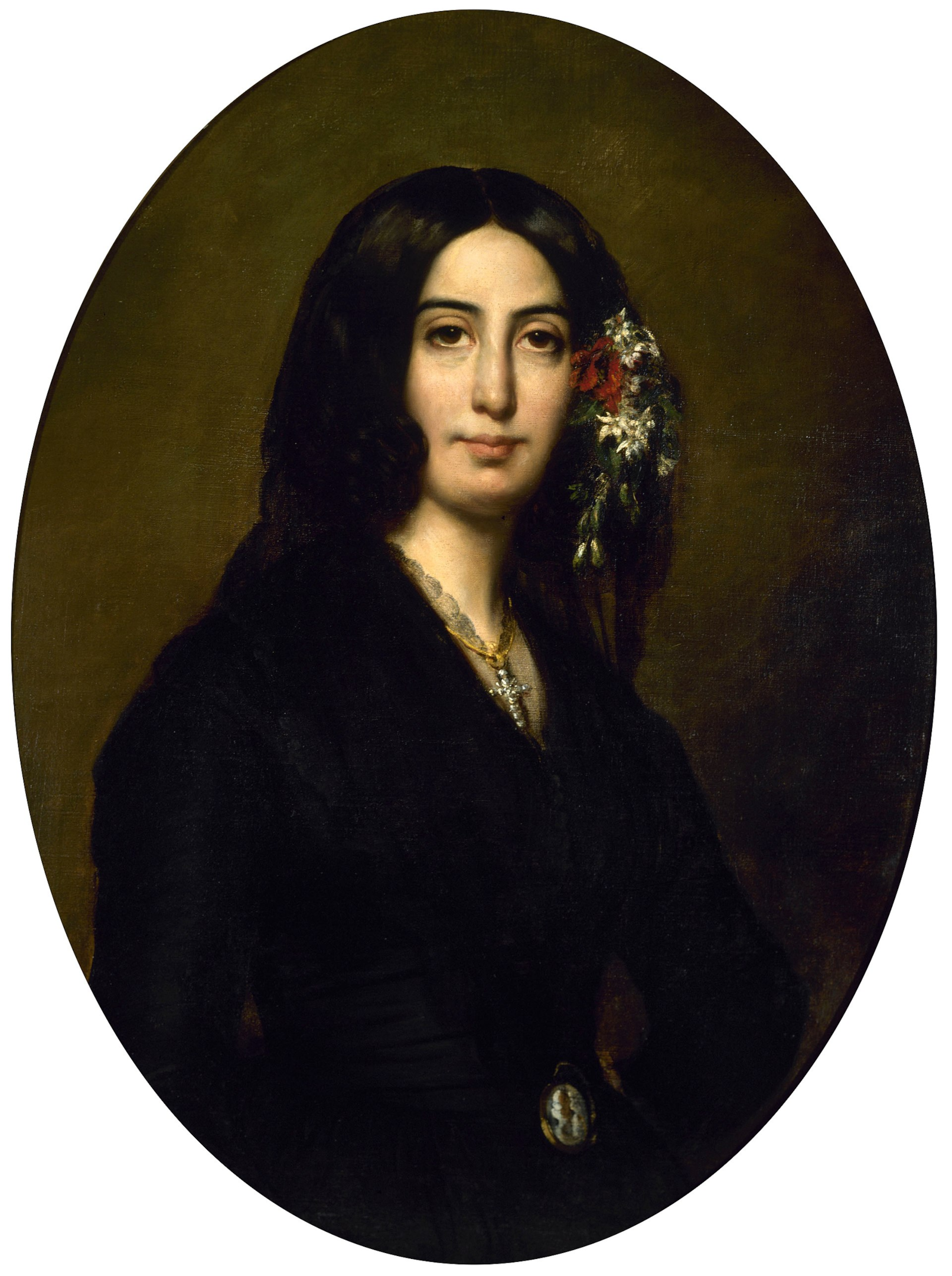

George Sand’s achievements as a writer and as an intellectual force in 19th-century France cannot be overstated. She was a prolific author, producing a vast body of work that ranged from novels and plays to literary criticism and political texts. Sand’s writing often explored themes of gender, class, and society, challenging the strictures of her time with her portrayals of strong, independent women and her advocacy for social reform. Her lifestyle and her liaisons, including her relationship with Chopin, were as much a part of her legacy as her literary contributions.
Sand’s influence extended beyond her writing; she was a central figure in the Parisian literary and artistic circles, hosting salons that were frequented by some of the leading intellectuals and artists of the day, including Gustave Flaubert, Eugène Delacroix, and, of course, Chopin himself. Her relationship with Chopin, despite its eventual end, remains one of the most notable aspects of her life, illustrating the interplay between her personal experiences and her creative expression. Sand’s legacy is that of a trailblazer who used her platform and her art to question and push the boundaries of societal norms, making her an enduring figure in the history of literature and feminist thought.
Sand’s Relationship with Chopin
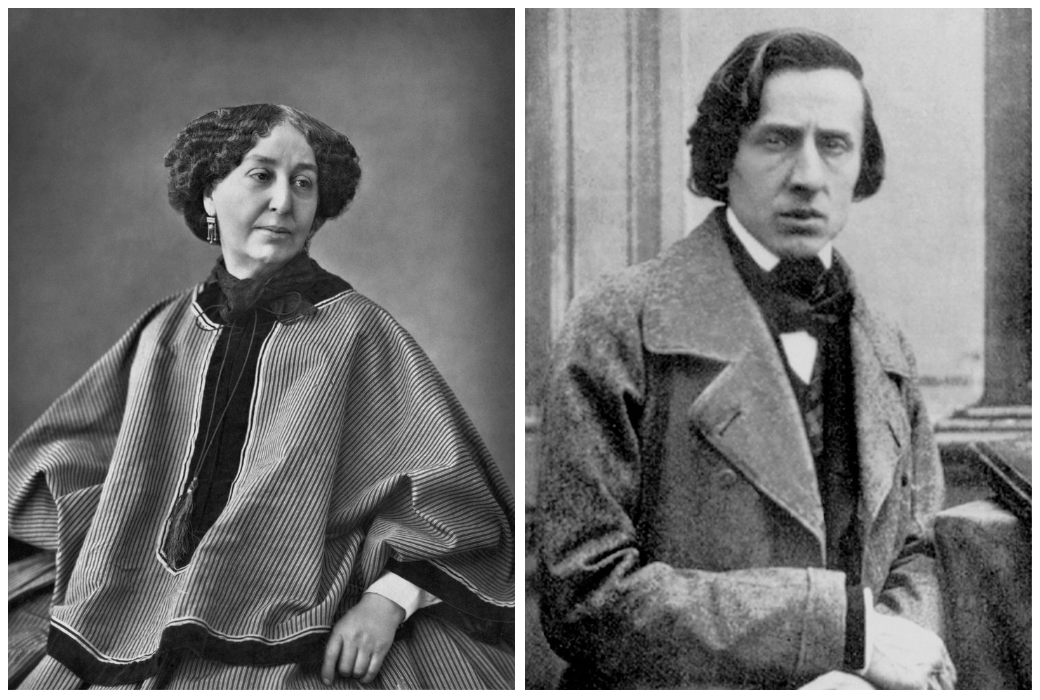

George Sand (the pseudonym of Amantine Lucile Aurore Dupin) and Frédéric Chopin shared a relationship that was as complex and passionate as it was influential to their respective artistic outputs. Sand, a novelist known for her defiance of 19th-century gender norms, and Chopin, a composer of delicate and emotive piano music, found in each other not just romantic companionship but also artistic inspiration.
Sand’s support for Chopin during their years together was multifaceted; she provided him with the emotional and physical care that his fragile health demanded, and perhaps more importantly, she offered an environment conducive to his creativity. Their relationship was set against the backdrop of Sand’s estate in Nohant, France, where Chopin composed some of his most enduring works. Sand herself was profoundly influenced by Chopin, with his presence and their relationship infusing her writing.
However, their union was not without its controversies and challenges. The very nature of Sand’s bold personality and her unconventional lifestyle, including her choice to wear male attire and engage in behaviors deemed inappropriate for women of her time, often overshadowed Chopin’s more reserved disposition. The tension between their public personas and private dynamics added layers of complexity to their relationship, leading to a tumultuous and eventually strained partnership.
Zelda and F. Scott Fitzgerald


Zelda Fitzgerald’s own achievements as an artist and writer are significant, though for many years, they were overshadowed by her husband’s literary fame and the spectacle of their life together. An accomplished dancer, painter, and writer, Zelda’s talent was multifaceted, but her aspirations were often stifled by the constraints of her marriage and the era’s expectations for women.
Her novel, “Save Me the Waltz,” is perhaps the most direct expression of her creative voice, offering insights into her turbulent life with Scott and her own unfulfilled ambitions. Published in 1932, the book was written during one of her stays in a mental health facility and is a semi-autobiographical account of their marriage, told from her perspective. The publication of the novel caused friction between Zelda and Scott, who felt that she had used material he planned to include in his own work.
Despite this, “Save Me the Waltz” stands as a testament to Zelda’s often under-appreciated literary talent. Beyond her novel, Zelda’s paintings and short stories further showcase her artistic abilities, reflecting the vibrancy and depth of her inner life. In recent years, there has been a growing recognition of Zelda Fitzgerald’s contributions to literature and art, reevaluating her legacy not just as a muse or a tragic figure, but as a creative force in her own right, whose work offers valuable insights into the complexities of women’s lives and artistic expression in the early 20th century.
Zelda’s Relationship with F. Scott
Zelda and F. Scott Fitzgerald’s relationship was emblematic of the Jazz Age, a term F. Scott himself coined to describe the flamboyant “roaring twenties.” Their tumultuous and highly publicized marriage was filled with mutual passion, creative inspiration, and a shared penchant for excess, which both fueled their artistic outputs and contributed to their personal downfalls.
F. Scott Fitzgerald, celebrated for his precise and poetic prose, found in Zelda not just a muse but also an embodiment of the modern, liberated woman he often depicted in his works. His most famous novel, “The Great Gatsby,” along with other writings, reflects the complexities of their relationship and the era they epitomized. Zelda, for her part, supported Scott’s career, serving as his muse and even contributing to his work, though this contribution was often unacknowledged.
Their partnership was marked by intense love and equally intense strife, exacerbated by Scott’s alcoholism and Zelda’s mental health struggles. Despite their personal challenges, the Fitzgeralds maintained a deep connection through their shared creative endeavors, with Scott drawing heavily on their life experiences in his writing, blurring the lines between fiction and reality.
Annie Oakley and Frank Butler


Annie Oakley’s achievements as a sharpshooter and performer made her an international icon and a pioneering figure for women in entertainment and sports. She was a star of Buffalo Bill’s Wild West show, where her precision, skill, and graceful demeanor captivated audiences around the world. Oakley’s ability to split a playing card edge-on and snuff out candles with a bullet were among the feats that earned her the nickname “Little Sure Shot,” a title purportedly given to her by Chief Sitting Bull.
Beyond her marksmanship, Oakley advocated for women’s empowerment through the promotion of physical education and the right to self-defense, encouraging women to learn to shoot. She challenged prevailing stereotypes about female capabilities and femininity, demonstrating that women could excel in traditionally male-dominated fields without compromising their dignity or femininity.
Oakley’s legacy extends beyond her shooting prowess; she remains a symbol of the American West and an early advocate for women’s rights and independence. Her life and career, supported and shared with Frank Butler, highlight a remarkable narrative of partnership and success against the backdrop of a changing America, making Annie Oakley a lasting figure of empowerment and resilience.
Oakley’s Relationship with Butler
Annie Oakley and Frank Butler’s relationship was a partnership that transcended the traditional boundaries of marriage to include professional collaboration and mutual respect in an era when women’s public roles were significantly restricted. Frank Butler, an accomplished marksman and vaudeville performer, was initially Annie’s competitor in a shooting match, where she, a 15-year-old sharpshooter from Ohio, defeated him. This event marked the beginning of their lifelong partnership, both personally and professionally.
Frank recognized Annie’s extraordinary talent and became her biggest supporter, eventually stepping back from his own career to manage and promote Annie as the star attraction. This role reversal was unconventional for the late 19th and early 20th centuries, showcasing a dynamic where the husband actively facilitated his wife’s success in a public arena.
Their relationship was based on mutual admiration and shared values, with Frank dedicating himself to ensuring that Annie received the recognition she deserved. This support was crucial in Annie Oakley’s rise to fame as one of the most renowned sharpshooters of her time, allowing her to challenge and redefine the gender norms of her era.
Dorothy and Thomas Hodgkin
Dorothy Hodgkin’s achievements in chemistry are monumental, culminating in her being awarded the Nobel Prize in Chemistry in 1964 for her determinations by X-ray techniques of the structures of important biochemical substances. She is most renowned for her work on the structure of penicillin, vitamin B12, and insulin, which not only advanced the field of biochemistry but also had profound implications for medicine and pharmacology. Her work on insulin was particularly impactful, paving the way for more effective diabetes treatments.
Dorothy’s dedication to her research and her ability to navigate the challenges of being a woman in a male-dominated field were remarkable in the mid-20th century. Beyond her scientific contributions, Hodgkin was a fervent advocate for scientific diplomacy and international peace, using her stature to promote causes she believed in, including the support of scientists in developing countries and the campaign for nuclear disarmament.
Her legacy is not only that of a brilliant scientist but also of a humanitarian who believed in the power of science to bridge divides and improve the human condition. Together, Dorothy and Thomas Hodgkin exemplified a partnership that was not only personally fulfilling but also deeply impactful, both in their immediate spheres and on the broader stage of global issues and challenges.
Thomas and Dorothy’s Relationship
Dorothy Hodgkin and Thomas Hodgkin shared a partnership anchored in mutual intellectual respect and a shared commitment to social justice, which transcended the conventional boundaries of their respective scientific and humanitarian endeavors. Dorothy, a pioneer in the field of X-ray crystallography, and Thomas, a respected historian and expert on Africa, navigated their careers and personal lives with a deep understanding of each other’s passions and a commitment to supporting those in need.
Thomas’s support for Dorothy’s scientific work was unwavering, despite the societal expectations of their time, which often relegated women to secondary roles in academia and professional fields. This support was critical in enabling Dorothy to pursue her groundbreaking research, which required long hours in the laboratory and significant periods of concentration and focus.
Their relationship was characterized by a shared ethos of service and advocacy, with both engaging in various causes and initiatives aimed at promoting peace, social justice, and the advancement of scientific understanding for the betterment of humanity. This collaborative spirit extended to their personal lives, where they raised a family amidst their demanding professional commitments, exemplifying a balanced partnership based on mutual respect and shared values.
Josephine de Beauharnais and Napoleon Bonaparte
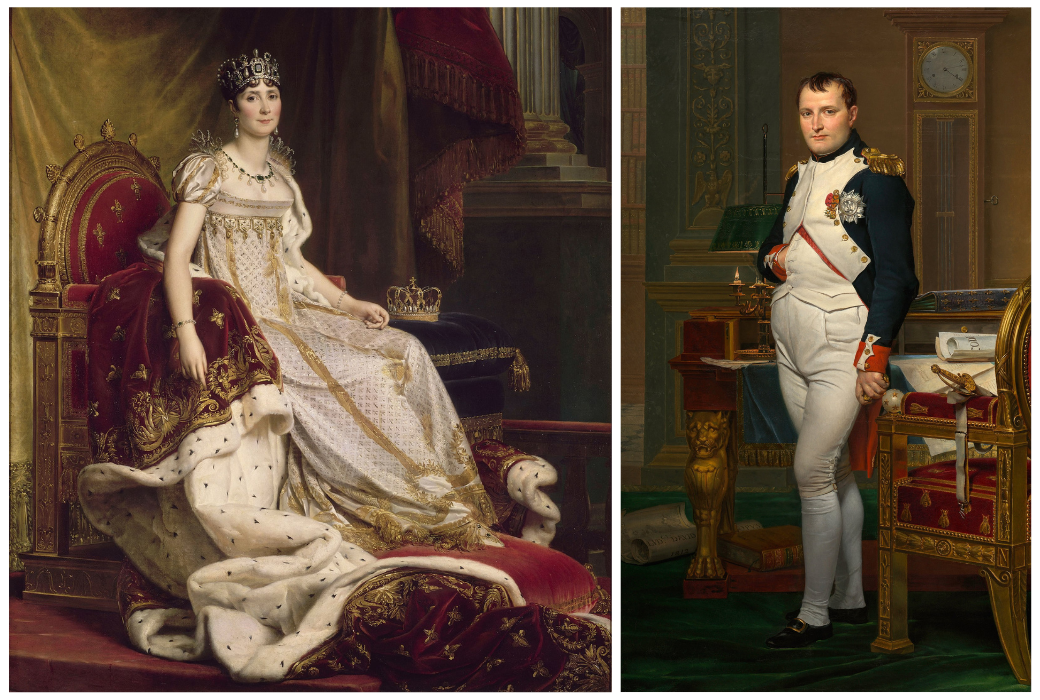

Josephine de Beauharnais’s achievements and influence extend beyond her role as Napoleon’s consort. She was a significant cultural figure in her own right, known for her sophisticated taste and patronage of the arts. Josephine significantly impacted the aesthetic and social norms of her time, transforming the Château de Malmaison into a center of Parisian society and a showcase for her exquisite collections of art and botanical specimens.
Her interest in botany was not merely a pastime but a passion that led to significant contributions to the field, with Malmaison’s gardens becoming renowned for their variety of plants, including the introduction of numerous species to Europe. Josephine’s influence also extended to fashion, where her style became emblematic of the Empire period, characterized by elegance and simplicity.
Despite the political and personal upheavals in her life, Josephine navigated her circumstances with resilience and grace, leaving a legacy that reflected her interests and passions. Her role in Napoleon’s life and her contributions to French cultural and social history illustrate the complexities of her character and the indelible mark she left on a transformative era in European history.
Josephine’s Relationship with Napoleon
Josephine de Beauharnais and Napoleon Bonaparte’s relationship was one of the most storied and scrutinized unions in history, embodying the complexities of love, power, and ambition during a tumultuous period in France. Their partnership began in the wake of the French Revolution, a time when political alliances were as critical as personal connections. Josephine, a widow with two children, brought social sophistication and connections to the marriage, which were invaluable to Napoleon’s rise. Napoleon’s profound love and admiration for Josephine were evident in his numerous passionate letters, in which he expressed his affection and longing for her.
Despite the political nature of many marriages within the French elite at the time, Napoleon’s relationship with Josephine seemed to transcend convenience, suggesting a genuine bond. However, this relationship was not without its challenges. Infidelities on both sides and the pressure on Josephine to produce an heir that she could not provide led to strains that the couple could not overcome, culminating in their eventual divorce. Despite this, Napoleon’s support for Josephine remained, ensuring her financial security and maintaining a relationship that, while no longer marital, continued to be significant for both until Josephine’s death.
W.E.B. Du Bois and Shirley Graham Du Bois
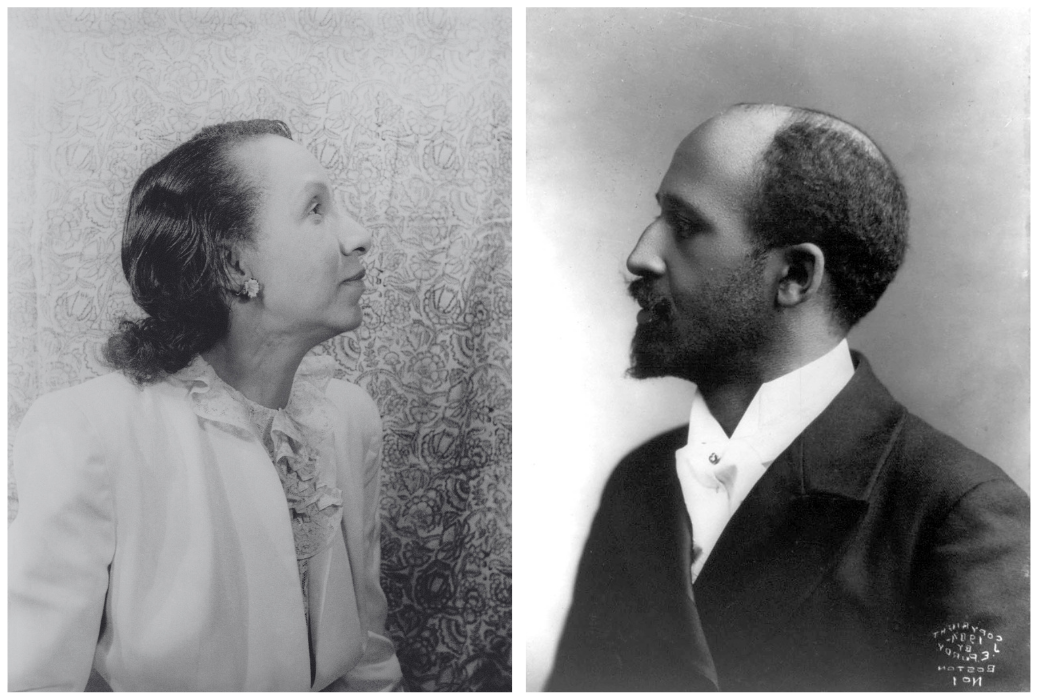

W.E.B. Du Bois’s support for Shirley Graham Du Bois’s career reflects a partnership that transcended the personal to include shared intellectual and political commitments. As a towering intellectual figure, social scientist, and civil rights activist, Du Bois was deeply involved in the struggle against racial discrimination and for the rights of African Americans. His marriage to Shirley Graham in 1951 marked the union of two individuals deeply committed to civil rights, anti-colonialism, and the Pan-African movement.
Shirley Graham Du Bois was an accomplished playwright, composer, and activist in her own right, with a career that spanned various creative and political realms. Her work often focused on racial and social issues, aiming to shed light on the struggles and achievements of African Americans and peoples of the African diaspora. W.E.B. Du Bois’s support for Shirley was multifaceted, encompassing both personal encouragement and professional collaboration. He recognized her talents and the importance of her contributions to the arts and activism, understanding that her successes were integral to the broader fight for equality and justice.
Their intellectual partnership was evident in their mutual involvement in civil rights and Pan-Africanism. W.E.B. Du Bois, with his extensive network and influence, likely facilitated introductions and provided platforms for Shirley’s work to gain visibility. Moreover, their shared commitment to social justice causes provided a foundation upon which they could both build their careers and activism. For instance, Shirley played a significant role in managing and preserving W.E.B. Du Bois’s legacy after his death, including her work to ensure that his writings and contributions continued to inspire future generations.
The couple’s move to Ghana in 1961, where W.E.B. Du Bois worked on the Encyclopedia Africana at the invitation of President Kwame Nkrumah, underscored their commitment to global black liberation movements. During this time, Shirley continued her activism and creative work, supported by Du Bois, in an environment that was deeply connected to their shared political goals. This move was a testament to their mutual support for one another’s aspirations and their shared vision for a world free of racial discrimination.
Ray and Charles Eames
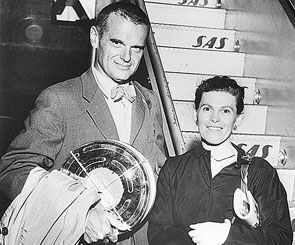

Ray and Charles Eames, a husband-and-wife duo, were pivotal figures in modern design, leaving an indelible mark on the fields of architecture, furniture design, industrial design, and the visual arts. Their partnership was a fusion of creative minds, with Charles’s background in architecture complementing Ray’s training in painting and sculpture.
Together, they embodied the ethos of mid-20th-century modernism, emphasizing functionality, simplicity, and beauty in design. The Eameses viewed their collaborative projects as the outcomes of an intertwined creative process rather than the work of individual talents, a perspective that was revolutionary at the time. Their synergy is perhaps most famously encapsulated in the design of the Eames Lounge Chair and Ottoman, a hallmark of modern style and comfort. Beyond furniture, they extended their collaborative spirit to multimedia projects, films, exhibitions, and even toys, demonstrating a holistic approach to design and creativity.
This partnership was not without its challenges, notably the era’s gender biases that often relegated Ray to the background, with Charles receiving most of the public recognition. Despite this, their mutual respect and shared vision remained evident, with both contributing equally to their body of work, a legacy that continues to influence design philosophy and practice today.
The achievements of Ray and Charles Eames extend far beyond their iconic furniture designs, encompassing a broad spectrum of influence that has shaped the way we think about design, space, and functionality. Their pioneering work in the use of new materials and techniques, such as the innovative use of plywood, fiberglass, and plastic, revolutionized furniture manufacturing and design aesthetics, making quality design accessible to the masses.
Dolly Parton and Carl Dean
Dolly Parton’s achievements in the entertainment industry and beyond are monumental, reflecting a career marked by creativity, resilience, and a commitment to giving back. With her roots in the Smoky Mountains of Tennessee, Dolly’s music, spanning country, pop, and beyond, has touched millions worldwide, earning her numerous awards and accolades, including induction into the Country Music Hall of Fame.
Beyond her music, Dolly’s impact is felt in her philanthropic work, most notably through the Imagination Library, a program she founded that gifts books to children from birth until they begin school, fostering a love of reading across the United States and beyond. Dolly’s ability to transcend the boundaries of genre and medium—venturing into acting, business, and philanthropy—speaks to her versatility and entrepreneurial spirit.
Her relationship with Carl Dean, characterized by mutual respect and support, has been a constant throughout this journey, offering a private sanctuary from which she has launched countless initiatives that reflect her creativity, compassion, and dedication to lifting others. Dolly Parton’s legacy, therefore, is not just one of artistic achievement but also of enduring love and commitment to making a positive difference in the world.
Parton’s Relationship with Husband Carl Dean
Married since 1966, Carl Dean has been a constant in Dolly’s life, providing a foundation of stability and normalcy away from the glare of the public spotlight. Unlike the relationships of many public figures, where both partners share the limelight, Carl has chosen a life of privacy, rarely appearing at public events or in the media.
This decision reflects a deep understanding and respect for the nature of Dolly’s career and the demands of her public persona. Dolly, in turn, has often spoken of Carl’s support as instrumental to her success, highlighting his role in helping her stay grounded and focused on her music and philanthropic efforts.
Their relationship challenges conventional expectations of celebrity marriages, illustrating that support and love can flourish without the need for public validation or shared professional ambitions. The longevity of their marriage, in an industry often marked by transient relationships, underscores the strength of their bond and the mutual respect that underpins it.
Final Thoughts


Behind many pioneering women stood a partner who defied traditional norms to champion equality and shared success. These men, through their unwavering support, respect, and advocacy, have played a crucial role in shaping the narratives of progress and empowerment. Their partnerships remind us that the journey toward achievement and recognition is often a shared one, where mutual support can amplify impact and foster environments where talent knows no gender.
Celebrating these supportive partners is not just about acknowledging their contribution to their wives’ successes but also about recognizing their role in challenging societal norms and paving the way for a more inclusive and equitable world. In doing so, we also reaffirm the importance of allyship, partnership, and the collective effort required to dismantle barriers and create spaces where everyone, regardless of gender, can thrive and contribute their best to society.








